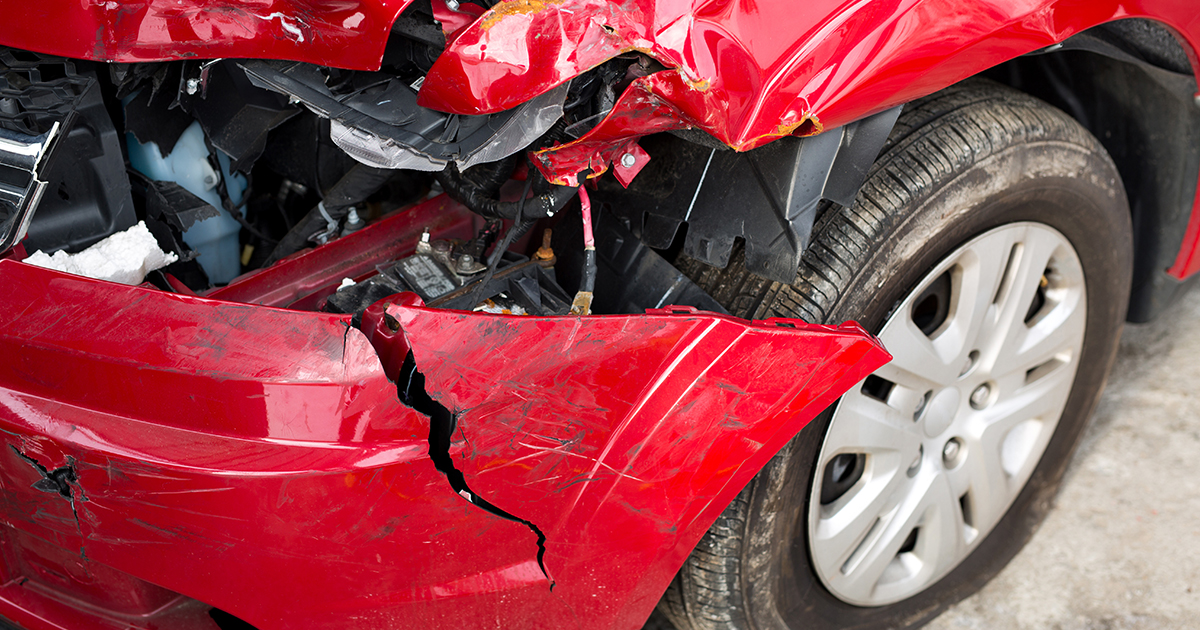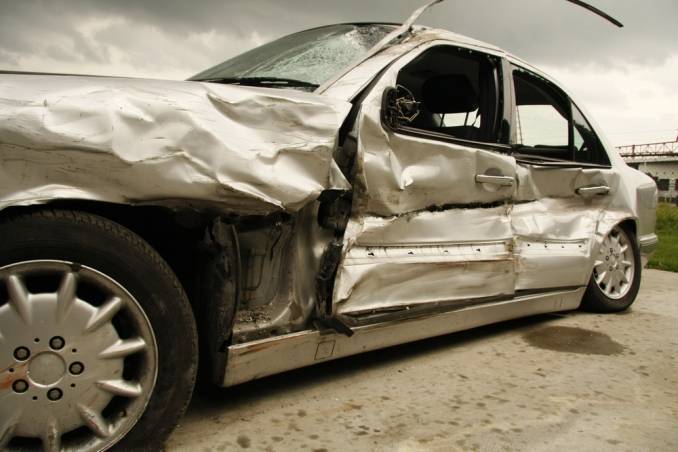
Proving Liability in a Las Vegas Car Accident

Las Vegas is a popular destination for tourists and business travelers alike, but it’s also known as one of the most dangerous cities in the country when it comes to car accidents. According to the Nevada Department of Transportation, there were more than 38,000 reported crashes on roads and highways throughout Clark County in 2017. Of those crashes, 1,836 resulted in injury and an additional 131 were fatal.
What is Liability?
Liability is a legal term used to describe the responsibility of someone for an action or failure to take action that has caused harm or damage. In terms of a car accident, liability refers to who was at fault and who may be responsible for paying property damage, medical expenses, and/or other costs related to the incident.
What is Proving Liability in a Car Accident?
Proving liability in a car accident is an important part of obtaining the maximum financial compensation available to accident victims. When pursuing a personal injury claim, it is essential to determine who was at fault and what caused the crash.
This may include factors like road conditions, traffic laws, drunken driving, or rear-end collisions.
In Las Vegas, there are experienced insurance companies and legal teams that can help accident victims prove their case for liability and pursue the best possible outcome for their claim.
Accident lawyers can use evidence such as witness testimonies, police reports, medical records, and photographs to establish the negligence of a fault driver and build a strong case for personal injury lawsuits.
A skilled attorney can also negotiate with an insurance adjuster to ensure that accident victims receive fair compensation for medical costs, emotional distress, and other damages related to the crash.
Proving Liability in Las Vegas Car Accidents
Insurance companies play an important role in determining liability in a Las Vegas car accident.
When a motorist is involved in an accident, they typically file a claim with their insurance provider.
The insurance company will investigate the incident to determine who was at fault and what amount of compensation is owed to the injured party.
In Las Vegas, liability is determined by the laws of negligence. In order to prove liability, it must be shown that one or more parties were at fault for causing harm or damage to another party due to their breach of a duty of care.
A duty of care is defined as an obligation to act with reasonable care and skill when dealing with another person or property. In order for a party to be held liable, it must be proven that their breach of duty caused the other party’s harm or damage.
The burden of proof lies with the injured party who is seeking to prove negligence on the part of another. This means that they must present evidence to prove that the other party was at fault.
This may include evidence such as photographs or witness statements. It is also important to note that Nevada has a “comparative negligence” rule, which means that if both parties are found to be negligent in the accident, their liability will be apportioned based on their degree of fault.
Types of Evidence Used to Prove Liability
Evidence is a key factor in determining liability in car accidents. Evidence may include:
- Photos taken at the time of the accident-Photos and video footage taken at the scene can help provide an accurate timeline of events, with close-up shots of skid marks, debris, broken glass or metal, and other physical evidence that can help determine who is at fault. Photographs and videos of the vehicles involved in the crash can be used to demonstrate damage done to each vehicle, which may indicate negligent or reckless driving. Victims should always take steps to document the accident scene as soon as possible after it occurs so that this type of evidence is captured before it disappears or becomes contaminated. Having photos and videos available for use by a legal team can be essential for victims seeking financial compensation for their medical costs, emotional distress, severe injury, and other damages associated with a personal injury claim.
- Witnesses statements-Information such as road conditions, speed of vehicles, traffic laws violated, or any other relevant details can be provided by witnesses. If there are multiple witnesses present, an experienced attorney can work to ensure that all of their accounts and statements are taken into consideration. It is also important for witnesses to provide detailed descriptions of exactly what they remember seeing so that their testimony is as accurate as possible. Eyewitness accounts and statements can go a long way in helping prove liability in car accidents, making it essential for victims to gather this type of evidence.
- Police reports-Police reports are also important as they can detail road conditions or if any traffic laws were violated. When an officer responds to an accident scene, they will typically document their findings in a police report. This report contains details about the vehicles involved, witness statements, and other information related to the incident. Any citations given out by the officer could be used to help prove liability.
- Medical documents-Medical records and expenses are necessary to prove damages such as physical injuries or emotional distress suffered by victims due to the accident.
Other records that may be relevant include accident reconstruction reports and property damage estimates. All of these documents can provide valuable evidence in determining who was at fault for the incident.
Reckless Driving or Intentional Acts
In Las Vegas, reckless driving or intentional acts can also be used to prove liability in a car accident. Reckless driving is defined as operating a vehicle in a manner that violates the law, endangers other people and property, and shows disregard for the safety of others.
Examples of reckless driving may include speeding, running red lights or stop signs, or driving while intoxicated.
Drunk drivers are one of the most common causes of car accidents in Las Vegas. According to the Nevada Department of Public Safety, there were over 6,000 DUI arrests in Clark County alone in 2018.
When a drunk driver is involved in an accident, it can be easier to prove negligence than if the accident involved two sober drivers because evidence of intoxication can be used to establish liability.
When it comes to proving liability in a Las Vegas car accident, intentional acts may be one of the most difficult types of cases to prove.
Intentional acts are those that are not accidental or unintentional but instead, are deliberate and premeditated. This means that the at-fault driver was aware of the consequences of their actions and chose to take them anyway.
In order to prove liability in a case involving an intentional act, it must be shown that the other driver had intent to cause harm or damage.
This can be difficult to do without clear evidence of the driver’s intention. However, if there is sufficient proof that the driver was aware of the risks and chose to proceed anyway, liability may be established.
What Happens if More Than One Person Is at Fault for the Accident?
It is also important to note that in Nevada, there is a “modified comparative negligence” rule which states that if both parties are found to be negligent in the accident, their liability will be apportioned based on their degree of fault.
How Is Negligence Identified?
In order to successfully prove negligence, the injured party must present evidence that the other party was at fault. Such evidence may include witness testimony, police reports, and photographs.
The Las Vegas car accident attorneys at Shook & Stone have extensive experience helping injury victims to prove the negligence of another and recover full and fair compensation for their injuries.
Our team is committed to protecting the rights of injured car accident victims and helping them to obtain justice.
When representing car accident victims, our legal team focuses on proving that another’s negligence more likely than not caused harm. We do this by focusing on the following legal elements:
- A legal duty existed – All drivers have a legal obligation to obey the rules of the road and operate their vehicles safely. This is their legal duty, and it can reduce the risk of preventable accidents.
- A legal duty was breached – Whenever drivers fail to uphold their responsibility to take reasonable measures to drive safely, they breach their legal duty and place others at risk.
- The breach of duty caused harm – Any breach of duty can cause harm. Examples may include distracted driving, drunk driving, or defective products made by negligent manufacturers.
- In any situation, victims who suffer harm as a direct result of another’s breach of duty may have the right to recover their damages.
Filing a Lawsuit Against an At-Fault Driver or Insurance Company
Filing a lawsuit against an at-fault driver or insurance company can be a complex process, especially in Las Vegas. Proving liability in a car accident is essential to recovering compensation for medical expenses, pain and suffering, and other damages.
If you are filing a lawsuit against an at-fault driver in Las Vegas, your attorney will need to prove that the defendant’s negligence or recklessness caused your injuries. If there are multiple parties involved in the accident, then fault may need to be assigned to each one according to Nevada law.
Your lawyer will also need to prove that your injuries were directly caused by the accident and that you have suffered measurable damages as a result of them.
This could include medical costs associated with treating your injuries, lost wages due to missed work for doctor’s appointments or recover time after surgery, and emotional distress due to physical pain.
In some cases it may also be possible to seek punitive damages from the at-fault driver or insurance company if their conduct was particularly egregious or reckless.
Is There a Time Limit for When a Lawsuit Must Be Filed for a Las Vegas Car Accident?
Under Nevada law , you have two years from the date of your injury accident to file a lawsuit against the negligent party. The same statute applies if you lost a loved one in a fatal car wreck and wish to bring a wrongful death lawsuit to recover damages.
How Do Shook and Stone Help Their Client’s Receive Proper Compensation?
By focusing on these elements and clearly proving fault and liability, our attorneys can provide our clients with the best possible leverage for maximizing their compensation.
We understand that these are difficult times, which is why we make it a point to handle all complexities of the personal injury claim process for our clients so that they can focus on recovering.
If you or your loved one has been injured in a car accident in Las Vegas or anywhere throughout the state of Nevada, Shook & Stone can help. For our assistance, call (702) 570-0000 today.
For more information about proving liability and your rights after an accident, call 702-570-0000 for a FREE consultation.
 Sunny
Sunny Distracted Driving a Potential Factor in Fatal Accident at Las Vegas Intersection
Distracted Driving a Potential Factor in Fatal Accident at Las Vegas Intersection 